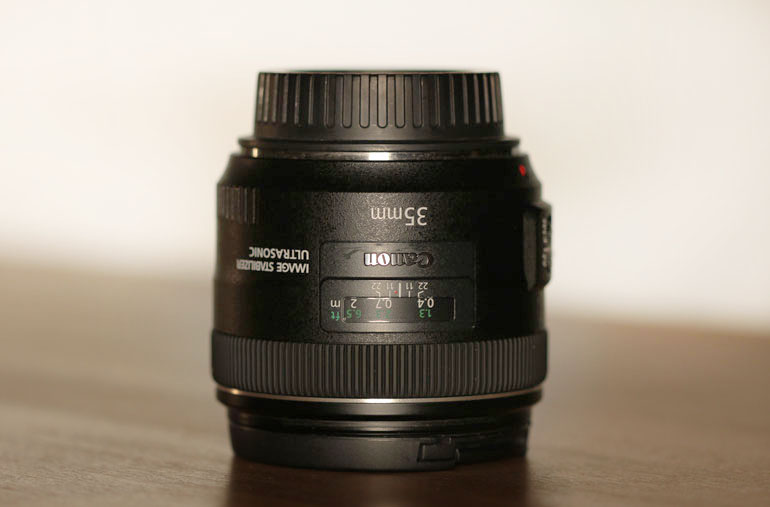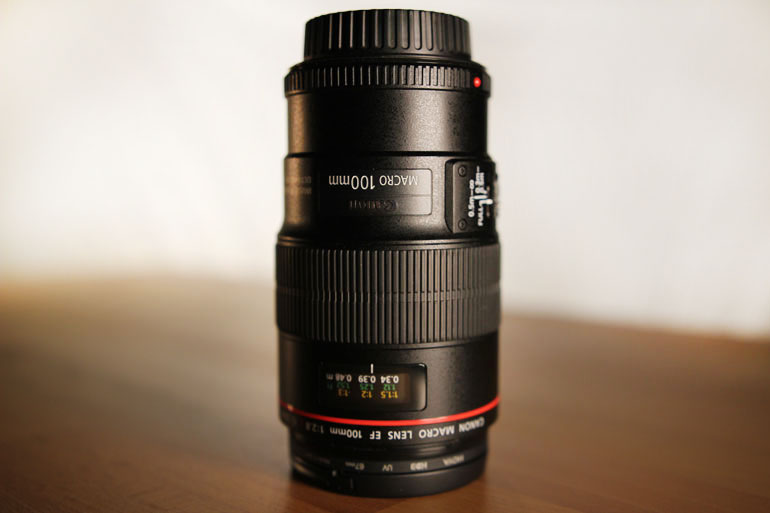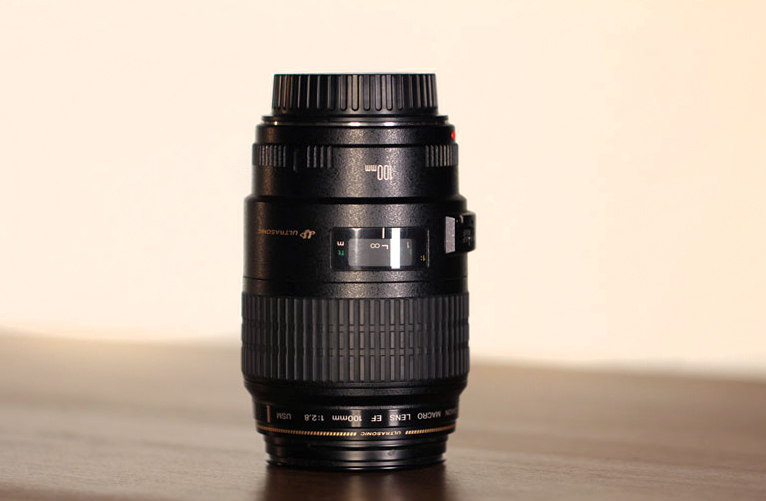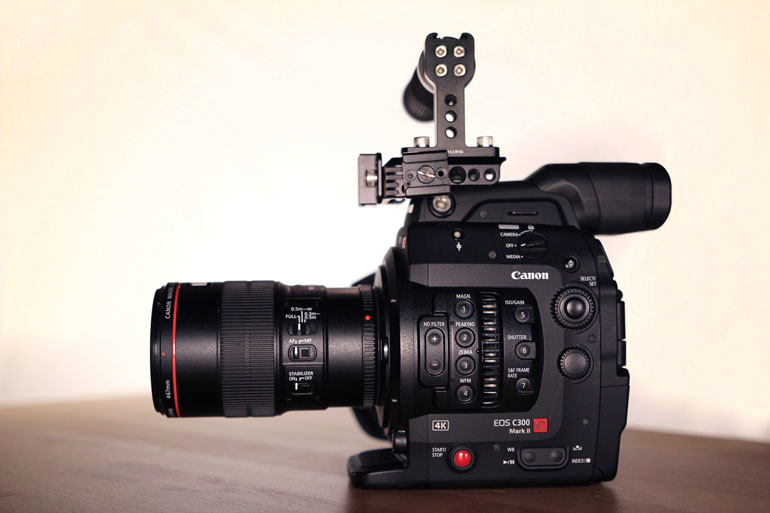Canon Prime Lenses: 35mm f/2 and 100mm f/2.8 Macro
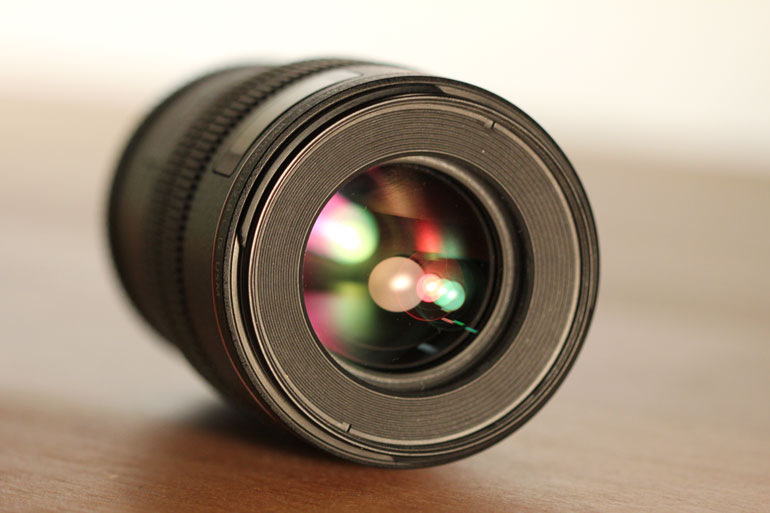
Prime lenses have a cool factor. They evoke words like “cinematographer,” “street photographer,” and names we love to pretend to recognize, like Henri Cartier-Bresson or Vivian Maier. Small form factor, handheld shooting, fast apertures, beautiful bokeh.
There are plenty of fresh faced DPs out there who boast a list of vintage Nikon or Rokinon primes on their website. And, there are tons of articles out there advising newbies on which cine prime set might be right for them… someday. But, what’s all the hype really about? Do prime lenses really have a place in the modern video shooter's kit bag? Are they really so much better than, say, a solid kit zoom?
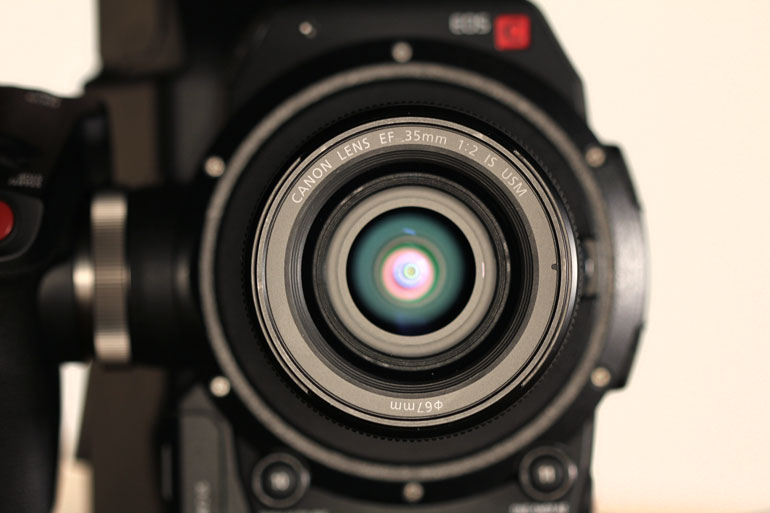
Canon 50mm lens - Nifty Fifty
We’ve all heard it - it’s perhaps the most classic piece of advice for beginning shooters: start with a solid prime lens. In fact, that advice is probably responsible for you or someone you know purchasing a “nifty fifty,” such as the ubiquitous Canon EF 50mm f/1.8 or the f/1.4 version.
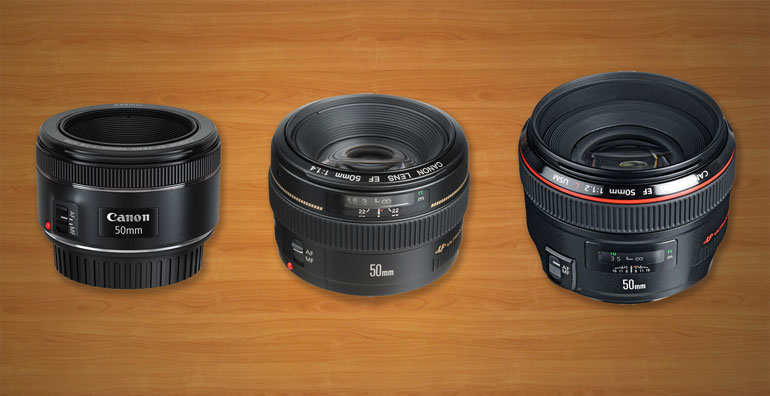
And it makes sense - when you’re just getting started, that first prime lens is sharp, fast and infinitely affordable. It has less parts to fiddle with than comparable zoom lenses, and it forces you to focus on technique. You learn to zoom with your feet and pay attention to choices like framing, aperture and depth of field.
All that said, when you enter into the video world, your nifty fifty might no longer be so nifty. In fact, it's probably more disappointing than amazing. A 50mm is pretty boxed in on anything but a full frame sensor, it’s jittery without IS whenever you try to move the camera, and on all but the most expensive (and heavy) versions the manual focus rings are cheap and plasticy.
So, why do so many people keep saying get a 50mm lens?
The New “Normal”: Full Frame vs Super 35 AND The case for the 35mm f/2
On a full frame sensor camera, such as the Canon EOS 5D Mark IV or Sony Alpha a7S II, that nifty 50mm lens is often considered to be roughly equivalent to the range the human eye can see. For that reason, it is often considered a “normal” lens for those cameras, as opposed to a wide, ultra-wide, portrait or telephoto lens.
If you could only have one lens at one focal length, chances are you’d go for the “normal” lens. But, what constitutes a normal lens depends on the camera you’re using - and more importantly the sensor inside the camera.
In our earlier DSLR days, we shot with APS-C sensor sized cameras like the Canon EOS 60D, which boasts a 1.6x crop factor. On this camera, a 50mm lens would end up giving you the equivalent of 80mm.
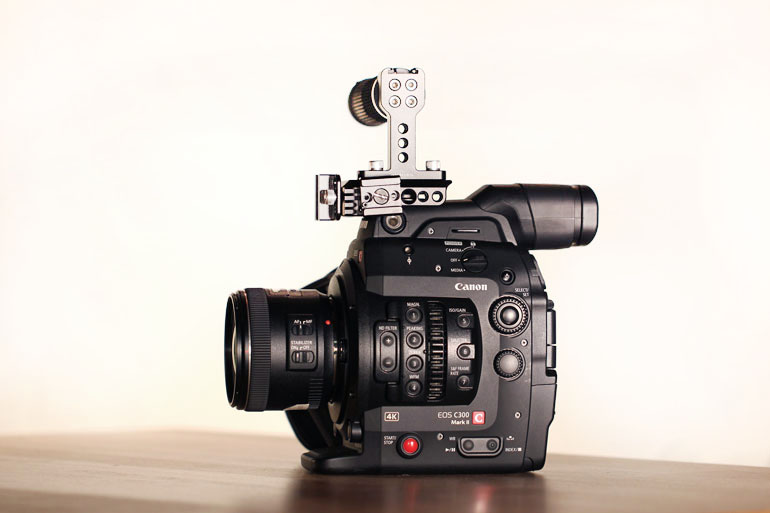
Most of our work these days is shot on a Canon C100 or Canon C300 Mark II - both of which sport a super 35 sensor. Compared to a full frame sensor, these cameras have a crop factor of 1.5x, similar to the APS-Cs of yesterday.
That means that a 50mm lens gives you an image that will look closer to 75mm on the C300. While those are lovely focal lengths for portrait shots or light telephoto, they’re severely limiting when you’re looking for that “normal” lens look and feel.
The 35mm lens
For us, the best normal prime lens for video is the Canon EF 35mm f/2 IS USM.
Besides hitting the normal focal length sweet spot of roughly 50mm on our 1.5x crop, there are a few factors that go into our selection of a good prime lens for video: image stabilization, minimum focus distance and solid autofocus.
Arguably, Canon has a few other prime lenses that could fit this bill, namely the Canon EF 24mm f/2.8 IS and Canon EF 28mm f/2.8 IS. Those are both great options. For us, the choice simply comes down to the 35mm being f/2 vs f/2.8. After all, that’s technically twice as fast.
If you only take away one thing from this article, it should be that we love our 35mm. In fact, until very recently it was the only true prime lens in our kit…
Canon 100mm Macro Lens
The most recent lens we’ve tested (and subsequently added to the kit), which also happens to be a prime lens, is the Canon EF 100mm f/2.8L Macro IS.
One thing we’ve felt was lacking from our lens kit was a good macro lens. What a macro lens allows you to do is create images with a reproduction ratio of 1:1 (or, depending on the lens, sometimes greater).
That 1:1 ratio is the relationship between the size of the object you’re shooting and the image on the sensor. And what it means is you can get really close to small things, and make them look big, and detailed.
While shooting all kinds of projects, it’s quite common for us to have a camera dedicated to telephoto - which is most often the Canon EF 70-200mm f/4 IS, sometimes with the 1.4x extender. It’s one of our overall favorite and most used lenses. But it has it’s limitations, especially in making little objects fill the frame.
Minimum focus distance
One aspect of lens choice that is often overlooked is minimum focus distance. Basically, how close to an object can you get and still be in focus.
The minimum focus distance of the Canon EF 100mm f/2.8L Macro IS is about 12”. But compare it to the minimum focal distance of about 47” on the Canon EF 70-200mm f/4L IS and you’ll notice a big difference.

Even with a 1.4x extender on the 70-200mm, we have often felt limited in our ability to get in really close to small, detailed shots. The only trick when shooting with the 100mm Macro is to not get so close that you’re standing in your light. One simple solution to that issue is to shoot through a simple LED ring light.
The Canon EF 35mm f/2 IS has a minimum focus distance of 9.5” - which basically means if you can see it, you can shoot it.
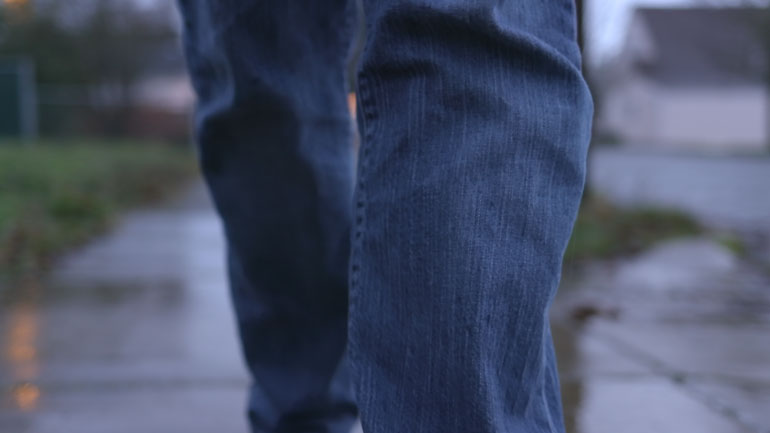
One scenario where minimum focal distance is important on a normal or wide lens is when working on a gimbal, like our Letus Helix. When following a subject, the 35mm allows us to be less worried about keeping a big distance from our subjects. That way, we’re able to get a variety of usable shots at seemingly different focal lengths beyond the ultra wide.
Having a good variety of shots without changing the lens, including closeups, makes editing together a sequence of gimbal shots infinitely easier. Of course, that’s also most useful when paired with our C300’s Dual Pixel Auto Focus (DPAF) and our handy handle solution.
At the end of the day, prime lenses in general have an advantage over almost every zoom lens when it comes to minimum focal distance. It adds to their versatility, so much so that you could even shoot a video with only a single prime lens. More on that later.
Image Stabilization
It is still relatively rare to find a prime lens with image stabilization. From a photographer’s perspective, this makes sense. Because the aperture of the average prime lens is fast - f/2.8 or faster - there is rarely the need to push the shutter speed of the camera below 1/125 to properly expose an image in low light. That means you’re not really worried about losing image sharpness to a shaky hand. So, why go to the trouble and expense of building in Image Stabilization, right?
But it is precisely that lack of image stabilization that caused us to ditch the primes. While a wide angle can be forgiving of shakes and jitters, even the wider common prime focal lengths - 24mm or 28mm - end up being a bit more hemmed in with a 1.5x crop. That means that movements as slight as a button push can be visible in your footage, even when practically locked down on a reasonably sized tripod. Forget shooting handheld. For us, that’s a deal breaker.

Whether shooting documentary or something more scripted, we like to work fast. And that means having the ability to go from handheld to a gimbal, slider, monopod or tripod in a matter of seconds. In fact, we have a Manfrotto 394 RC4 quick release plate on every piece of equipment we use for added speed. But, in order to make that fast paced style work, experience has taught us that image stabilization is an absolute must.
The image stabilization on the Canon EF 35mm f/2 IS is excellent, allowing us to seamlessly move between handheld and all of our camera support systems.
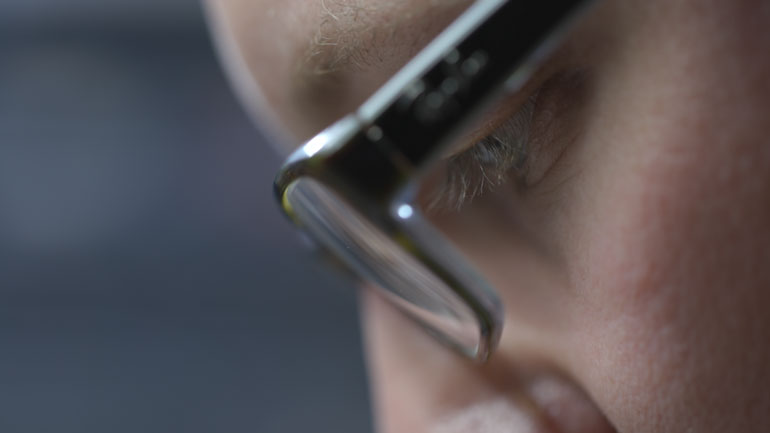
This sequence was shot handheld, thanks to Image Stabilization
The image stabilization on the Canon EF 100mm f/2.8L Macro IS is, in our opinion, vital for using a macro in video. While it may be tempting to save a few hundred dollars on an equally well reviewed lens like the non-IS Canon EF 100mm f/2.8L Macro USM, our tests found it to be basically unusable for our type of work.
Even in a fairly locked down tripod situation - like during an interview - we use image stabilization. We find that without it, even the slightest audio adjustment or reframe can render the image unusable. While there is arguably a potential slight loss of sharpness, as well as a the slight whirring sound the lens produces when IS is switched on to deal with, we find the trade-offs to be worthwhile.
Test Case: Patrick Rollens, Table Top Gamer
In the years we’ve been producing short documentary videos - and we’ve done literally hundreds of them - we’ve never intentionally shot a piece solely using prime lenses. Mostly, we’ve never specifically attempted it because we’re often shooting for hire.
When there is a client involved, our goal is to make the best work possible for the people who are paying, the people featured in the story, and ourselves. But, sometimes limitations can be illuminating… so, we decided to do a little experiment with primes and a find a quick passion project.
Having worked with the Canon EF 35mm f/2 IS for a couple years, we were immediately confident we could shoot the piece completely with just that lens. Now, conducting our usual relatively long interview with such a short focal length (literally half of our usual minimum using the 70-200mm f/4) would be unusual - but, as luck would have it our friends at Focal Point Photography in Dallas, Oregon had agreed to lend us a Canon EF 100mm f/2.8L Macro IS, which in addition to giving us wicked close ups, could serve as a killer interview lens. Score.
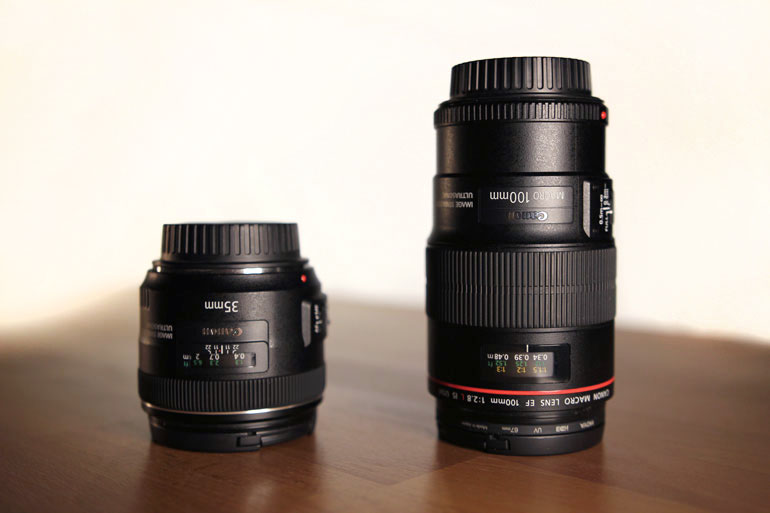
Knowing we wanted to see what the Macro had to offer, and put it through its paces, we looked for a story that included something small. And what could be smaller than something called “miniatures”? As it turns out, our subject Patrick Rollens, a tabletop gamer, knows all about miniatures.
By the way, if you're interested in learning more about Patrick and his world of miniatures, head on over to his table top miniatures blog.
The shooting experience
The first sequence we shot was some exterior walking shots on the Letus Helix with the 35mm f/2 IS. It was January, and the light was starting to fade, so shooting outside first was a no-brainer.
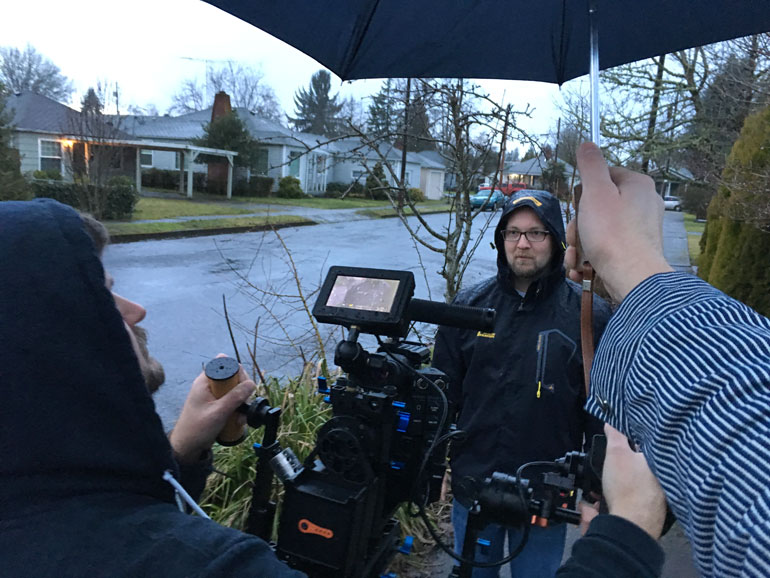
As we mention above in the notes about minimum focus distance, the key here was to get a variety of shots, especially that go beyond the usual ultra wide angles we see so often on gimbal. As far as gimbal shooting goes, the 35mm is on the tight end of what’s practical, but with IS it is still perfectly usable.
In fact, when shooting our subject Patrick’s face, we definitely prefer the look we get from the 35mm, because it doesn’t have the type of distortion we often see with a wide angle like the Canon EF-S 10-18mm f/4.5-5.6 IS STM. Overall, it’s just a more natural look.

If we were on a usual documentary style shoot, we might choose to move from the gimbal to something like a Canon EF 24-105mm f/4L IS on a monopod. We think of that as bread and butter shooting - the core coverage we know we’ll need for the edit.
With that setup, you can easily pick a 180 degree radius on a subject and immediately start collecting shots for a sequence. And, with that kind of zoom range, we can expect to produce 3 or more different shots (at 24mm, 70mm, 105mm respectively, for example) without even moving your feet. Not having that option, the shoot took a decidedly slower and more intentional path.
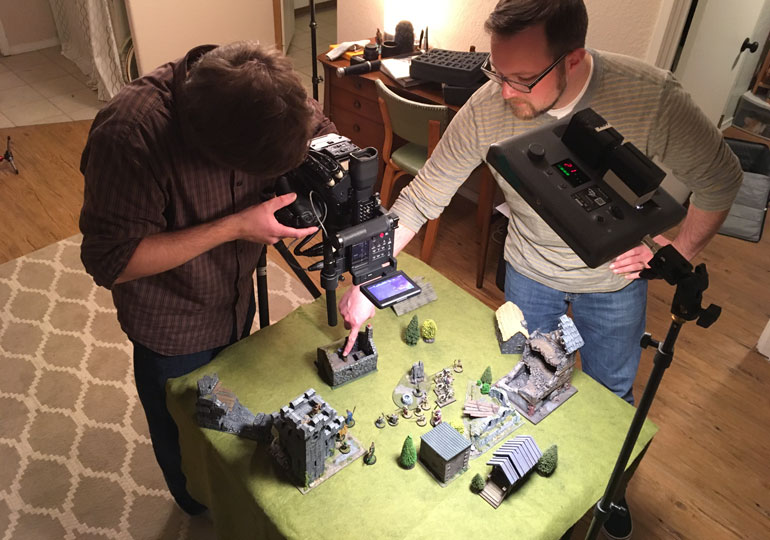
One of our constant self criticisms, especially when it comes time to edit, is not taking enough time to let a scene play out in front of the camera. To often it seems when we’re reviewing footage that right at the moment something interesting happens or changes, we fiddle with exposure, zoom, focal length, or something that makes the shot unusable.
Using a prime lens, it’s easy to quickly break those bad habits. We found ourselves looking less at the monitor on our camera, and more at the scene taking place in front of us. We also found ourselves striving to anticipate action, rather than simply follow it sloppily. It felt good.
Macro Lessons Learned
When it came time to use the Canon EF 100mm f/2.8L Macro IS, we were immediately glad to have the image stabilization. The initial idea was to focus on using the lens just for capturing images of the miniatures, which we thought would mostly happen from the tripod. However, as with every documentary shoot, there were all kinds of opportunities to capture lots of action we didn’t anticipate (the subject’s son playing with toys, cooking and eating dinner, etc.).
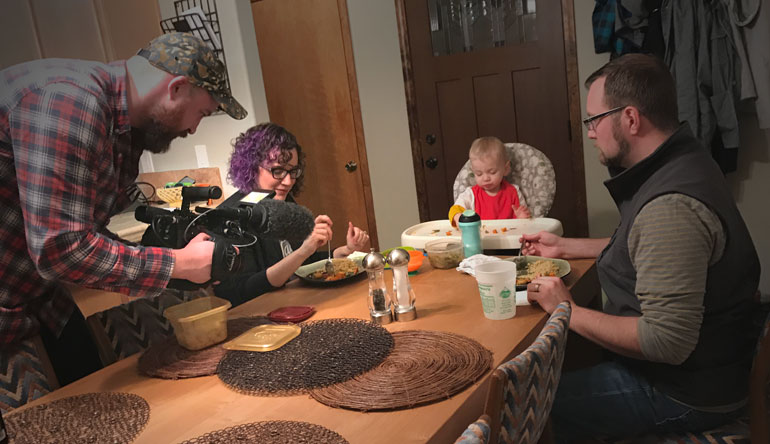
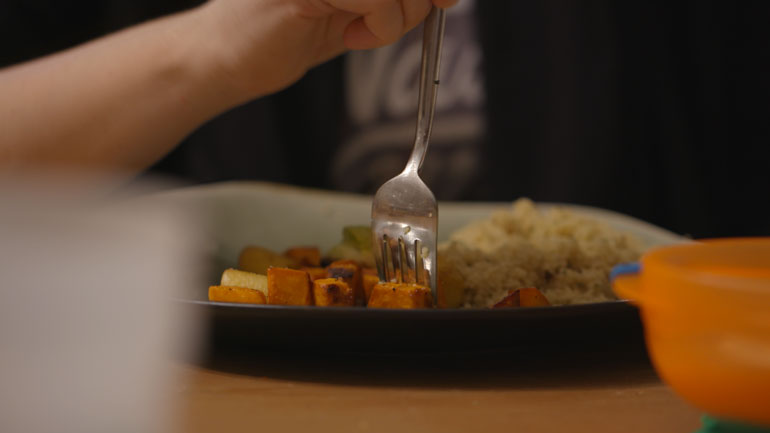
That kind of natural day-to-day life action is almost always fast paced and not easily directed (nor should it be, really). Knowing that, we found ourselves immediately trying to shoot handheld and on the monopod with the 100mm. And, to our surprise, a lot of those shots turned out great and made the edit. In fact, it’s a setup we can see us using regularly on shoots going forward.
Later on, shooting the actual miniatures mostly on a tripod, we quickly learned a few lessons about using a macro lens for video:
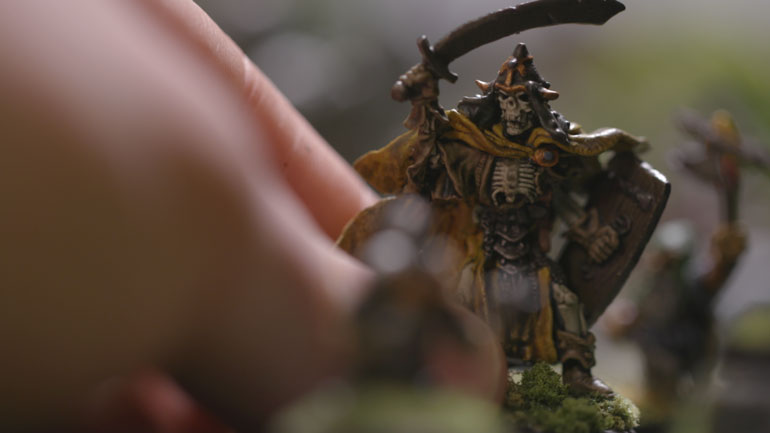
More light would make it easier to nail focus
1. You need more light than you think. Even though the lens is capable of shooting at f/2.8, if you want small objects to be in reasonable focus you likely need to shoot at a larger aperture, like f/5.6 or greater. Maybe even f/22 in some cases. Just like in when you’re shooting a portrait shot of a person at f/1.8 or so, and tip of their nose can be slightly out of focus… so too can your macro footage. And at that point, it’s not a cool depth of field effect - it’s just stuff being out of focus.
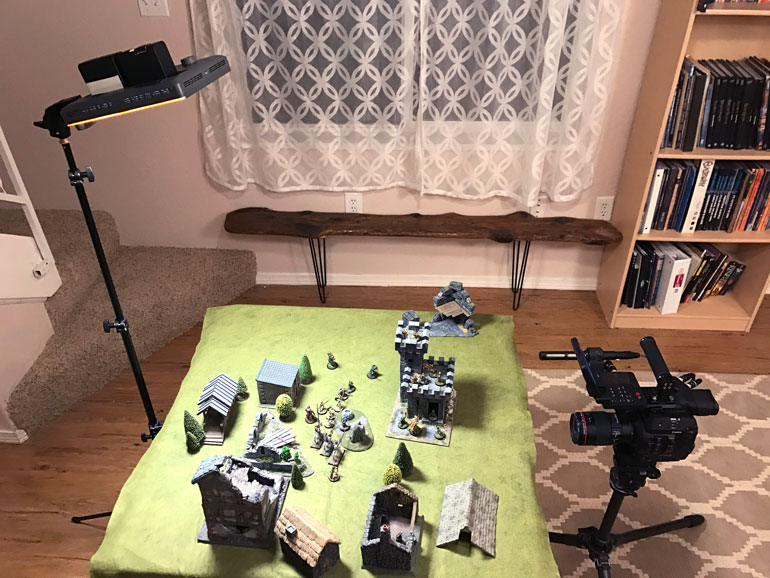
We lit this scene with the Aputure Amaran 672W LED light
2. It’s easy to end up standing in your light. A good way to get around this issue is to use a dimmable ring light, like the serviceable F&V R-300 ring light, which we generally have on the shelf, and simply shoot through the light. That way, you’re never casting a shadow onto your tiny subjects. It’s easy to either mount the light on a simple light stand with an articulating arm like the Cinevate Universal Accessory Mount, or you could attached it to a rail system on the camera.

3. It might be a good idea to use a larger or off-camera monitor. It actually ends up being kind of difficult to read exactly where the focus is when such a small object is filling so much of the frame. Focus peaking works to an extent, but you’re also shooting quite close up at a fairly telephoto focal length… so it could easily become a two person job with both a “director” monitoring the shot for the shooter. We did not get to try this on this particular project, but we have plans to do so in the future… (dibs on being the “director”!).
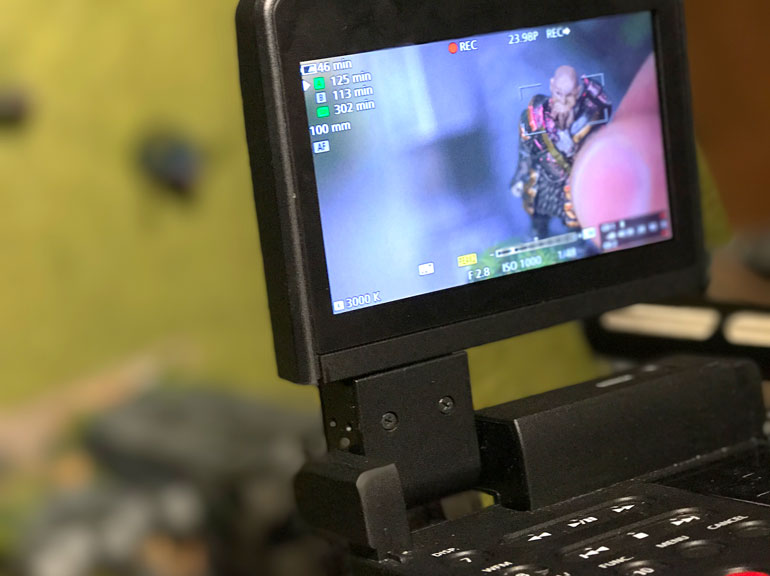
4. Just shoot manual focus. It might sound blasphemous to some folks, but the Dual Pixel Auto Focus (DPAF) on the Canon C100 & 300 is so good and dependable, that we end up using it all the time. It’s just faster and more accurate than even a skilled operator can often be. But, in the macro world, it’s better and quicker to just flip it off and go old school. In fact, the autofocus becomes quickly annoying when you’re really close up on something… sometimes micro adjusting or straight up racking right in the middle of your shot.
Interview with a Macro Lens
When it came time to interview our subject Patrick, which we generally do at the end of a shoot, we kept the 100mm on the C300 MKII. We are very much accustomed to being able to reframe interview subjects fairly quickly and seamlessly while using a zoom, but of course you could also just shoot on the wide end and record in 4K. However, in that case maintaining focus does become fairly critical.

Without the ability to quickly reframe, we were worried about our interview subject wandering - but, that is easily remedied by our usual overhead hypercardiod boom mic. We find that the mic is often just in the subject’s upper peripheral vision, so we were able to quickly tell him to keep that in sight, which worked about as well as a gaff tape mark.
Overall, the 100mm Macro performed excellently, and was as sharp as our standard 70-200mm f/4 interview lens. If anything the image stabilization was noticeably quieter than the zoom lens, which can sometimes sound like it’s grinding tiny bits of gravel. OK, maybe it’s not that bad… but, it is noisy.
Conclusion
So, are the prime lenses worth the investment and trouble? Yes and no. If you’re on a limited budget, you can certainly make due with a lens like the 24-105mm f/4 and a camera with good low light capabilities. We’ve done it for years.
But, prime lenses do have their advantages, and if you chose your lenses wisely, a prime lens can do things no other lens can do. And they don’t take up that much space in the bag. Which, you know, is nice. But, maybe skip the nifty fifty.
